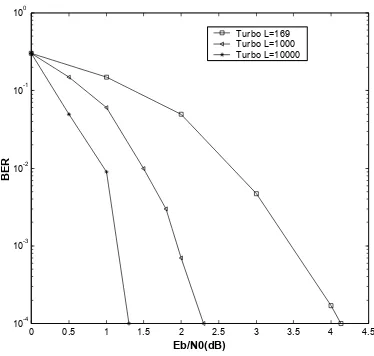Performance of Parallel Concatenated Convolutional Codes (PCCC) with BPSK in Nakagami Multipath M-Fading Channel
Full text
Figure



Related documents
Performance Analysis of Energy Harvesting Aware Multi relay Networks in Nakagami m Fading Zhong et al EURASIP Journal on Wireless Communications and Networking (2018) 2018 63 https
Performance of multicarrier complementary coded CDMA under frequency selective Nakagami m fading channels RESEARCH Open Access Performance of multicarrier complementary coded CDMA
BER versus SNR per bit performance for the constant-weight code based multirate SFH/MC DS-CDMA system over multipath Ricean fading channels ( m = 3) for L = L = 3 upon varying
Abstract— In this contribution, the Bit Error Rate (BER) performance of OFDM systems using coherent demodulation over time-variant flat Nakagami- m fading channels is analyzed.. In
Rayleigh and Rician fading channels have already been studied and employed in OFDM systems in fre- quency selective and flat fading environment.. Nakagami- m distribution is
Next the results of Nakagami-m variates along with Rayleigh variates for different values of ‘m’ were presented and then the results of Hardware implementation
Abstract—In this paper we give a comparative analysis of decoding algorithms of Low Density Parity Check (LDPC) codes in a channel with the Nakagami distribution of the
We evaluate BER performance of both NOMA user types in AWGN, as well as Rayleigh and Nakagami-m channels, using the proposed downlink F-OFDM NOMA model.. The power coefficients